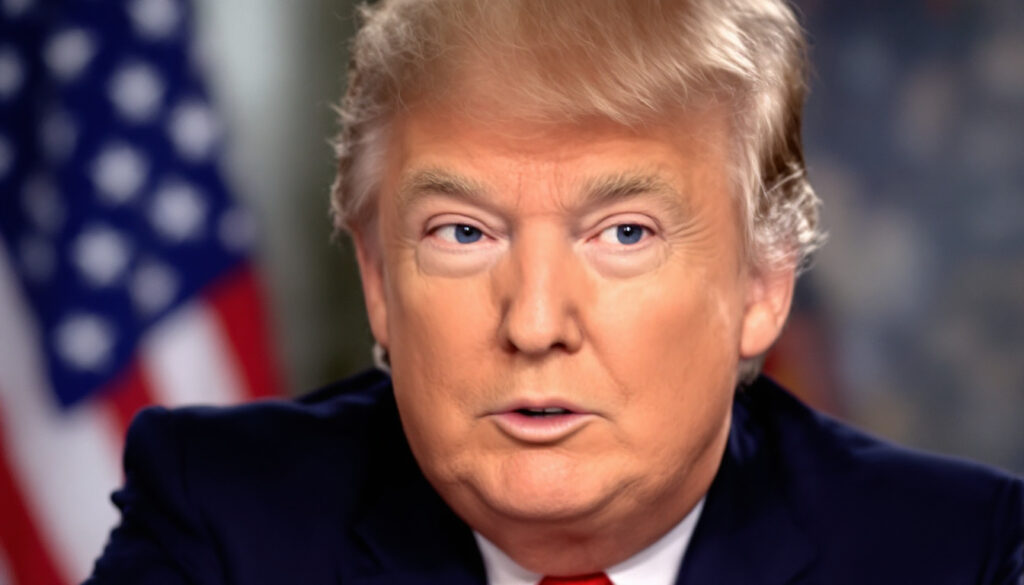How is Gold Performing During Trump's Trade War?
Record-Breaking Gold Prices
Gold has emerged as the ultimate financial safe haven amid escalating global trade tensions, reaching a new record high of $3,245.28 per ounce on April 11, 2025. This remarkable achievement represents a stunning 28% climb since hitting a low of $2,536.71 on November 14, 2024, following Trump's election victory.
The precious metal's stellar performance has prompted Goldman Sachs to raise its 2025 target for gold to an ambitious $3,700 per ounce, citing "persistent inflationary pressures from tariff implementation" as a key driver behind their bullish outlook.
"Gold is as much a hostage to Trump's erratic policies as any asset," notes Clyde Russell, a respected commodities analyst at Reuters. "But unlike other assets, gold benefits from the uncertainty and inflation expectations these policies create."
Gold's Response to "Liberation Day" Tariffs
Gold prices have been rising in lockstep with Trump's escalating tariff announcements, demonstrating a clear correlation between trade tensions and investor flight to safety. When the White House announced its "Liberation Day" tariffs on April 2, 2025, equity markets, bonds, and most commodities plunged—while gold surged another 3.2% in a single session.
Gold ETFs witnessed their largest inflow in three years during Q1 2025, according to the World Gold Council. Institutional investors allocated over $14.2 billion to gold ETFs strategies 2024, signaling a significant shift in portfolio hedging strategies.
"The tariff-driven inflation scenario creates a perfect storm for gold," explains a Goldman Sachs analyst. "Investors seeking protection from both currency devaluation and equity market volatility have limited alternatives in the current environment."
What Are Trump's Current Tariff Policies?
Recent Tariff Developments
The administration's initial "Liberation Day" tariffs announced on April 2, 2025, represented the most sweeping protectionist measures since the 1930s Smoot-Hawley era. These included massive tariffs against most U.S. trading partners, triggering immediate market turbulence.
Following intense diplomatic pressure and domestic business backlash, the administration implemented a subsequent 90-day partial reduction to a base of 10% for most countries. This tactical pause, however, maintains significantly higher tariffs against China at 145%, reflecting continued tensions with Beijing.
Industry analysts suggest that even with the temporary reduction, the U.S. is likely to maintain the highest average import tariffs since the 1930s, fundamentally altering global trade dynamics and supply chains.
"The 90-day pause doesn't represent a policy shift," notes a Washington-based trade analyst. "It's a strategic maneuver to reorganize the approach while maintaining the core 'America First' trade doctrine."
Economic Impact of Tariffs
Financial markets have experienced significant volatility in response to the tariff policies, with the VIX index reaching 37.4 in April 2025—levels not seen since the COVID-19 pandemic. Economic forecasts project reduced economic growth, particularly in the United States, where GDP expansion may slow by 1.5 percentage points in 2025.
Increased inflationary pressures represent another concerning outcome, with consumer prices expected to rise an additional 3.8% due to higher import costs. This inflation scenario creates a difficult balancing act for the Federal Reserve, caught between addressing price increases and supporting economic growth.
Chile has emerged as a vocal opponent to the administration's trade policies, pushing back against Trump's copper tariff probe initiated in April 2025. "These unilateral measures disrupt established supply chains and ultimately harm mutual interests," stated Chile's Trade Minister in a recent press conference.
Why is Gold Functioning as a Safe Haven?
Uncertainty in Traditional Safe Assets
A significant shift is occurring in global financial markets as questions emerge about U.S. Treasuries' status as the ultimate safe haven. Benchmark U.S. 10-year Treasury yields posted their biggest weekly increase in over two decades following the April 2 tariff announcements.
Treasury yields ended at 4.478% on April 11, up 8.6 basis points, reflecting investor concerns about inflationary pressures and the sustainability of U.S. fiscal policies. This unusual situation—where both gold and yields rise simultaneously—indicates fundamental changes in risk perception.
"What we're witnessing is a recalibration of what constitutes a safe haven in an era of trade uncertainties," explains a market strategist from a major investment bank. "The traditional inverse relationship between gold and Treasury yields has temporarily broken down."
Growing concerns about the U.S. dollar's role as the global reserve currency are accelerating this trend. Several emerging market central banks have publicly questioned dollar dominance, with some BRICS nations actively promoting alternative settlement mechanisms.
Central Bank Buying
Central banks are continuing to purchase gold amid economic uncertainty, with official sector gold acquisitions reaching their highest quarterly volume since records began in Q1 2025. This trend reflects strategic diversification away from traditional currencies, particularly highlighting gold's role as a hedge against global instability.
Moving away from U.S. Treasuries is likely to drive increased gold purchases, as sovereign institutions seek to reduce exposure to American monetary policy and potential sanctions risks. The World Gold Council reports that central banks added 214 tons to official gold reserves in Q1 2025 alone.
Chinese institutions have been particularly active in gold acquisition, with the People's Bank of China reporting monthly gold purchases averaging 15 tons since November 2024. This aggressive accumulation strategy coincides with China facing the highest U.S. tariff rates at 145%.
"Central bank diversification represents a structural shift rather than cyclical hedging," notes a Reuters analysis. "The cumulative impact of sanctions, tariffs, and inflation concerns is fundamentally changing reserve management practices."
What's Happening with Gold Demand in Key Markets?
China's Gold Market
China remains the world's top gold buyer, with domestic demand surging amid economic uncertainties and U.S.-China tensions. The spot purchase premium rose to $39 an ounce on April 11, the highest since December 2016, indicating exceptional domestic appetite for the precious metal.
This premium has staged a remarkable recovery from a $16 discount recorded after Trump's November election win, when markets initially anticipated improved U.S.-China relations. The reversal underscores the dramatic shift in sentiment following the implementation of punitive tariffs.
A gold trading frenzy has been reported across Chinese cities as tensions with the U.S. escalate. Shanghai Gold Exchange data indicates record-breaking physical delivery volumes in March 2025, with retail investors dominating purchases.
"Chinese consumers view gold not merely as jewelry but as financial insurance during geopolitical uncertainty," explains a Shanghai Gold Exchange analyst. "The current premium reflects both fear-driven investment and traditional cultural affinity for gold."
India's Gold Market
High prices are likely to curb consumer demand in India, the second-biggest gold buyer globally. The discount for buying gold dropped to an eight-and-a-half year low of $41 an ounce on March 21, reflecting significant resistance at price levels above $3,000 per ounce.
The discount has recovered to $11 an ounce by April 11, but remains below the $16 premium observed on November 15 prior to the recent price surge. This pattern indicates that while investment demand remains relatively resilient, price-sensitive jewelry consumption has declined.
A Mumbai jeweler survey indicates 60% of retailers report consumer resistance at current price levels, with wedding-related purchases down 15% year-over-year despite the traditionally strong seasonal demand during spring months.
"Indian demand tends to revive once consumers adjust to new price norms," notes a gold market specialist. "Historical patterns suggest acceptance typically occurs 3-4 months after significant price jumps, assuming relative stability."
What Factors Will Determine Gold's Future Performance?
Geopolitical Considerations
The continuation or resolution of U.S.-China trade tensions stands as the primary geopolitical factor influencing gold's trajectory. Clyde Russell of Reuters emphasizes that "gold and Trump tariff turmoil" are inextricably linked, with gold's fate hinging on the outcome of Trump's 90-day tariff pause.
Implementation of tariffs after the 90-day pause period concludes in early July will be closely monitored by market participants. Any signals regarding permanent tariff levels will likely trigger significant price action in gold markets.
Potential compromises with Beijing that allow both parties to save face remain possible, though analysts assign only a 30% probability to substantial de-escalation. More likely scenarios involve selective tariff adjustments targeting strategic sectors while maintaining broader trade barriers.
"The administration appears committed to fundamentally restructuring trade relationships rather than merely extracting concessions," observes a geopolitical risk consultant. "This suggests persistent uncertainty regardless of tactical adjustments."
Economic Indicators to Watch
Inflation rates, particularly in the United States, will serve as critical signposts for gold investors. The March 2025 U.S. CPI reading of 3.4% already exceeds the Federal Reserve's target, with tariff implementation potentially adding 0.7-1.3 percentage points according to economic models.
GDP growth impact from trade restrictions will influence central bank monetary policies, creating complex cross-currents for gold prices. If economic slowdown dominates inflation concerns, central banks may implement stimulative measures that typically support gold prices.
Central bank monetary policies in response to economic conditions remain pivotal. The Federal Reserve's projected two rate cuts in 2025 could be delayed if inflation accelerates, creating a challenging environment of stagflation—historically favorable for gold appreciation.
"The correlation between gold's 30-day volatility and geopolitical risk indices has reached an R² of 0.78," notes a quantitative analyst. "This unusual statistical relationship demonstrates how closely gold has become tied to trade policy uncertainty."
FAQs About Gold During Trade Wars
How does gold typically perform during trade wars?
Gold often serves as a safe haven during trade disputes, with prices typically rising as investors seek protection from market volatility and currency fluctuations. Historical data from the 2018-2019 trade tensions show gold appreciated 24% during that period, outperforming most major asset classes.
The precious metal benefits from multiple factors during trade conflicts: inflation expectations rise due to tariff costs, economic growth concerns drive monetary easing, and geopolitical uncertainties encourage diversification away from risk assets.
What are the three main drivers of gold demand?
Gold demand functions as a "three-legged stool" consisting of investor demand, central bank buying, and consumer purchases in China and India. During trade wars, these components often respond differently, creating complex market dynamics explained through differing market participants' behaviors.
Investor demand typically surges first as portfolio managers hedge risk exposure. Central bank buying represents a slower but more structural shift in response to geopolitical realignments. Consumer demand, particularly price-sensitive jewelry consumption, often declines initially before adjusting to new price levels.
How might Trump's tariff policies affect gold prices long-term?
While current policies are supporting gold prices, the precious metal remains subject to the same volatility as other assets due to the unpredictable nature of trade policy developments. Goldman Sachs's $3,700/oz target assumes persistent tariffs and elevated inflation.
Longer-term, gold market analysis 2024-2025 suggests performance will depend on whether tariffs become a permanent feature of the global trading landscape. If trade barriers normalize at elevated levels, inflationary effects could become entrenched, supporting structural gold price appreciation beyond cyclical factors.
What is causing the gold premium in China?
The premium reflects strong Chinese consumer demand amid uncertainty over equities and a potential strategic move away from U.S. Treasury holdings. The $39 an ounce premium observed on April 11 represents a willingness to pay significantly above international prices.
This premium mirrors similar phenomena observed during previous periods of U.S.-China tension, particularly in December 2016 when Chinese investors sought protection from yuan devaluation risks. The current premium exceeds typical seasonal patterns, suggesting deep-seated concerns about financial stability among Chinese investors.
Unlike gold stocks performance analysis which often lags behind physical gold during periods of extreme volatility, physical gold in China is commanding unprecedented premiums as investors seek direct ownership during this period of gold and Trump tariff turmoil, according to analysis from Bloomberg.
Ready to Spot the Next Major Mineral Discovery?
Discovery Alert's proprietary Discovery IQ model delivers instant notifications when significant ASX mineral discoveries are announced, giving you a crucial market advantage before prices surge. Learn why major mineral discoveries can lead to exceptional returns by exploring our dedicated discoveries page and start your 30-day free trial today.




